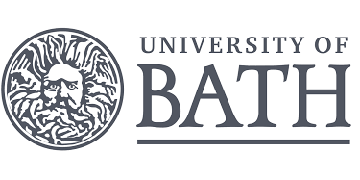University of Bath: Researchers awarded Faraday Division Horizon Prize
A team of scientists from the UK, Belgium and Germany has won the Royal Society of Chemistry’s Faraday Division Horizon Prize for the discovery of chiroptical harmonic scattering, theoretically predicted in 1979 and demonstrated experimentally 40 years later.
When light of a certain colour (frequency f) shines on many materials, they can produce colour-shifted harmonics (frequencies 2f, 3f, 4f, etc.). In 1979, David Andrews, a postdoctoral scientist developed a theory predicting that on illuminating a chiral molecule with circularly polarised light, the intensity of light scattered at such harmonics would depend on the chirality of the scatterers – an effect known as chiroptical hyper Rayleigh scattering (CHRS).
However, for four decades, experimental evidence for such an effect remained elusive.
In 2019, a team at the University of Bath finally reported the first experimental observation of CHRS. Key to this success were the use of highly sensitive equipment and the choice of materials. The team made use of meta-molecules – silver nanohelices much smaller than the wavelength of light, fabricated in the group of Peer Fischer in Germany. Upon illumination with circularly polarized light, it was observed that the intensity of light scattered at the second harmonic (2f) depended on the chirality of the helices.
Chiroptical Harmony’s work provides a straightforward, user-friendly technique for an in-depth characterisation of the light-matter interaction in chiral materials. This type of interaction is crucial for numerous emerging nanotechnologies – including nanorobotics, where the chirality of nanorobots can be used to monitor their functions.
The team at Bath, from the Departments of Chemistry and Physics, included: Dr David Carbery, Joel Collins, David Hooper, Robin Jones, Lukas Ohnoutek, Ben Olohan, Dr Dan Pantos, Dr Fabienne Pradaux-Caggiano, Dora Răsădean, Dr Kristina Rusimova and Professor Ventsislav Valev.
Dr Kristina Rusimova (Physics) said: “Many molecules that are essential to life (e.g. DNA, amino acids) exhibit a handedness called chirality. This chirality can completely change their properties and thus knowing their exact chirality is absolutely vital.
“This work constitutes the first demonstration of a simple and elegant method of detecting the chirality of both artificial nanostructures and molecules. Not only that, but the effect is 100,000 times more sensitive than its linear counterparts.”
Professor Valev led the experimental work on the project. He said: “The importance of chirality in biological processes is often compared to the invention of a standardised screw for the industrial revolution.
“As human-made nanotechnology is progressing, it too requires chirality, for things to fit both together and with the existing biomachinery. It is at this interface, between organic and inorganic chiral technology, that I believe our technology will be most impactful; it could help characterize and guide chirality transfer between organics and inorganics.”
Professor David Andrews, from the University of East Anglia, said: “It is a real honour, and especially rewarding, to win this prize and be connected with these pioneering experimental studies, vindicating theory from so long ago.”

